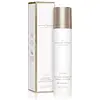What's inside
What's inside
 Key Ingredients
Key Ingredients

 Benefits
Benefits

 Concerns
Concerns

 Ingredients Side-by-side
Ingredients Side-by-side

Water
Skin ConditioningGlycerin
HumectantAlcohol Denat.
AntimicrobialSqualane
EmollientDimethicone
EmollientCyclopentasiloxane
EmollientStearyl Alcohol
EmollientVitreoscilla Ferment
Skin ConditioningCopper Gluconate
Skin ConditioningZinc Gluconate
Skin ConditioningMagnesium Gluconate
Skin ConditioningManganese Gluconate
Skin ConditioningSerine
MaskingCitrulline
Skin Conditioning2-Oleamido-1,3-Octadecanediol
Skin ConditioningCeramide 3
Skin ConditioningHydroxypalmitoyl Sphinganine
Skin ConditioningCholesterol
EmollientBiosaccharide Gum-1
HumectantPanthenol
Skin ConditioningTocopheryl Acetate
AntioxidantFructose
HumectantGlucose
HumectantSucrose
HumectantUrea
BufferingAlanine
MaskingAspartic Acid
MaskingHexylene Glycol
EmulsifyingDextrin
AbsorbentGlutamic Acid
HumectantHexyl Nicotinate
EmollientMenthoxypropanediol
MaskingSilica
AbrasiveDimethiconol
EmollientPotassium Cetyl Phosphate
EmulsifyingPEG-100 Stearate
Glyceryl Stearate
EmollientAcrylates/C10-30 Alkyl Acrylate Crosspolymer
Emulsion StabilisingCarbomer
Emulsion StabilisingTriethanolamine
BufferingBlue 1 Lake
Cosmetic ColorantCI 19140
Cosmetic ColorantDisodium EDTA
Phenoxyethanol
PreservativeMethylparaben
PreservativeEthylparaben
PreservativeButylparaben
MaskingIsobutylparaben
AntimicrobialPropylparaben
PreservativeParfum
MaskingWater, Glycerin, Alcohol Denat., Squalane, Dimethicone, Cyclopentasiloxane, Stearyl Alcohol, Vitreoscilla Ferment, Copper Gluconate, Zinc Gluconate, Magnesium Gluconate, Manganese Gluconate, Serine, Citrulline, 2-Oleamido-1,3-Octadecanediol, Ceramide 3, Hydroxypalmitoyl Sphinganine, Cholesterol, Biosaccharide Gum-1, Panthenol, Tocopheryl Acetate, Fructose, Glucose, Sucrose, Urea, Alanine, Aspartic Acid, Hexylene Glycol, Dextrin, Glutamic Acid, Hexyl Nicotinate, Menthoxypropanediol, Silica, Dimethiconol, Potassium Cetyl Phosphate, PEG-100 Stearate, Glyceryl Stearate, Acrylates/C10-30 Alkyl Acrylate Crosspolymer, Carbomer, Triethanolamine, Blue 1 Lake, CI 19140, Disodium EDTA, Phenoxyethanol, Methylparaben, Ethylparaben, Butylparaben, Isobutylparaben, Propylparaben, Parfum
Caprylic/Capric Triglyceride
MaskingDicaprylyl Ether
EmollientGlycerin
HumectantWater
Skin ConditioningHelianthus Annuus Hybrid Oil
EmollientOlea Europaea Fruit Oil
MaskingPrunus Amygdalus Dulcis Oil
Skin ConditioningSesamum Indicum Seed Oil
EmollientSucrose Stearate
EmollientSucrose Laurate
EmollientPhragmites Karka Extract
Skin ConditioningPoria Cocos Extract
Skin ConditioningMoringa Oleifera Seed Extract
Skin ConditioningNelumbo Nucifera Flower Extract
Skin ConditioningHelianthus Annuus Seed Oil
EmollientGlyceryl Caprylate
EmollientSucrose Palmitate
EmollientMaltodextrin
AbsorbentTocopherol
AntioxidantCitric Acid
BufferingSodium Citrate
BufferingPotassium Sorbate
PreservativeSodium Benzoate
MaskingLimonene
PerfumingLinalool
PerfumingGeraniol
PerfumingCitral
PerfumingParfum
MaskingCaprylic/Capric Triglyceride, Dicaprylyl Ether, Glycerin, Water, Helianthus Annuus Hybrid Oil, Olea Europaea Fruit Oil, Prunus Amygdalus Dulcis Oil, Sesamum Indicum Seed Oil, Sucrose Stearate, Sucrose Laurate, Phragmites Karka Extract, Poria Cocos Extract, Moringa Oleifera Seed Extract, Nelumbo Nucifera Flower Extract, Helianthus Annuus Seed Oil, Glyceryl Caprylate, Sucrose Palmitate, Maltodextrin, Tocopherol, Citric Acid, Sodium Citrate, Potassium Sorbate, Sodium Benzoate, Limonene, Linalool, Geraniol, Citral, Parfum
Ingredients Explained
These ingredients are found in both products.
Ingredients higher up in an ingredient list are typically present in a larger amount.
Glycerin is already naturally found in your skin. It helps moisturize and protect your skin.
A study from 2016 found glycerin to be more effective as a humectant than AHAs and hyaluronic acid.
As a humectant, it helps the skin stay hydrated by pulling moisture to your skin. The low molecular weight of glycerin allows it to pull moisture into the deeper layers of your skin.
Hydrated skin improves your skin barrier; Your skin barrier helps protect against irritants and bacteria.
Glycerin has also been found to have antimicrobial and antiviral properties. Due to these properties, glycerin is often used in wound and burn treatments.
In cosmetics, glycerin is usually derived from plants such as soybean or palm. However, it can also be sourced from animals, such as tallow or animal fat.
This ingredient is organic, colorless, odorless, and non-toxic.
Glycerin is the name for this ingredient in American English. British English uses Glycerol/Glycerine.
Learn more about GlycerinParfum is a catch-all term for an ingredient or more that is used to give a scent to products.
Also called "fragrance", this ingredient can be a blend of hundreds of chemicals or plant oils. This means every product with "fragrance" or "parfum" in the ingredients list is a different mixture.
For instance, Habanolide is a proprietary trade name for a specific aroma chemical. When used as a fragrance ingredient in cosmetics, most aroma chemicals fall under the broad labeling category of “FRAGRANCE” or “PARFUM” according to EU and US regulations.
The term 'parfum' or 'fragrance' is not regulated in many countries. In many cases, it is up to the brand to define this term.
For instance, many brands choose to label themselves as "fragrance-free" because they are not using synthetic fragrances. However, their products may still contain ingredients such as essential oils that are considered a fragrance by INCI standards.
One example is Calendula flower extract. Calendula is an essential oil that still imparts a scent or 'fragrance'.
Depending on the blend, the ingredients in the mixture can cause allergies and sensitivities on the skin. Some ingredients that are known EU allergens include linalool and citronellol.
Parfum can also be used to mask or cover an unpleasant scent.
The bottom line is: not all fragrances/parfum/ingredients are created equally. If you are worried about fragrances, we recommend taking a closer look at an ingredient. And of course, we always recommend speaking with a professional.
Learn more about ParfumWater. It's the most common cosmetic ingredient of all. You'll usually see it at the top of ingredient lists, meaning that it makes up the largest part of the product.
So why is it so popular? Water most often acts as a solvent - this means that it helps dissolve other ingredients into the formulation.
You'll also recognize water as that liquid we all need to stay alive. If you see this, drink a glass of water. Stay hydrated!
Learn more about Water